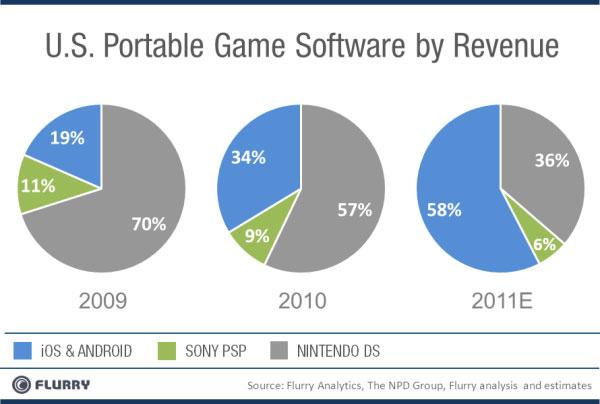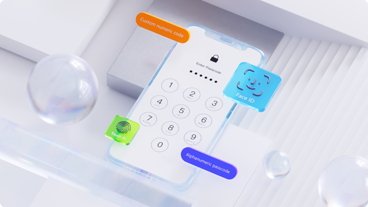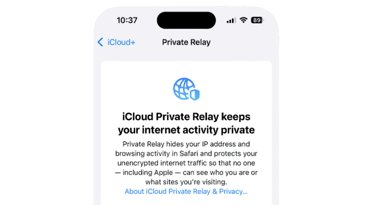Apple's iOS & Google Android command 58% of US portable game revenue
Mobile analytics firm Flurry revealed on Wednesday that free and inexpensive games from iOS and Android devices have taken control of the portable gaming market. Together, Google and Apple's platforms controlled 58 percent of revenue in 2011, a significant change from 2009 when the Nintendo DS commanded 70 percent of the portable industry's revenue.
"We see, for the first time, that smartphone revenue in the U.S. has leap-frogged portable game revenue," said Peter Farago, vice president of marketing with Flurry. "The disruption has been downright brutal."
The data comes soon after Nintendo reported its first loss in profits since 1982. A sharp decline in game and console sales led the Japanese game maker to lose $925 million over the six-month period ending in September.
Flurry estimates that total U.S. portable game revenue in 2011 will be $3.3 billion, up from a total of $2.7 billion in 2009. But while iOS and Android accounted for just 19 percent of the market in 2009, their share of revenue has more than tripled in the last two years.
Nintendo, meanwhile, has seen its market dominance shrink to just an estimated 36 percent of the U.S. portable gaming market in 2011, while Sony's PlayStation Portable platform is expected to represent 6 percent domestically.
"The days of paying $25, or more, for a cartridge at a retail store may soon end," Farago said. "Further, the installed base of iOS and Android devices has not only reached critical mass, but also continues to grow at unprecedented rates."
Flurry's data is based on a combination of publicly available data from the NPD Group along with its own data collected from mobile devices. Flurry Analytics tracks more than 20 billion use sessions per month across more than 125,000 applications on 330 million unique devices per month. Nearly 40 percent of the application usage sessions it tracks are from games.
The success of smartphones as gaming devices has prompted investors to encourage Nintendo to bring its popular game franchises, like Mario and Zelda, to competing platforms like the iPhone and iPad. However, Nintendo executives have refused to port their software to third-party devices and are sticking with their own hardware for first-party games.
Apple's iOS devices may even begin to encroach on traditional living room consoles as well, thanks to the new wireless AirPlay functionality built into iOS 5. With an Apple TV hooked up to a high-definition television set, an A5-powered iPhone 4S or iPad 2 can wirelessly stream content and allow users to play games on the big screen, as Firemint has done with its Real Racing franchise.
 Neil Hughes
Neil Hughes














 Amber Neely
Amber Neely
 Thomas Sibilly
Thomas Sibilly
 AppleInsider Staff
AppleInsider Staff
 William Gallagher
William Gallagher
 Malcolm Owen
Malcolm Owen
 Christine McKee
Christine McKee










45 Comments
my wife and i have iphones and an ipad 2. she was talking about a nintendo DS for the older kid. i said no way i'm spending $40 or more on games. especially with the insanity that some games you can only play once
Why is iOS and Android lumped together but the PSP and the DS are separate? Is there a breakdown of these numbers somewhere?
Why is iOS and Android lumped together but the PSP and the DS are separate? Is there a breakdown of these numbers somewhere?
That's what I'm thinking. It's like saying the iPad and PlayBook account for 75% of the tablet market. Sure, it's technically accurate, but it doesn't really paint an accurate picture of the landscape.
That's what I'm thinking. It's like saying the iPad and PlayBook account for 75% of the tablet market. Sure, it's technically accurate, but it doesn't really paint an accurate picture of the landscape.
Well they are differentiating tablet/phone (computing device) with handheld system (purely gaming)
I agree this distinction is becoming less and less relavent. I assume DS and PSP get email etc. now? with 3G?
If not, I suppose the distinction is valid. The underlying threat of article: handheld games obsolete, portable device assimilates gaming
I want to know the breakdown iOS vs Android.